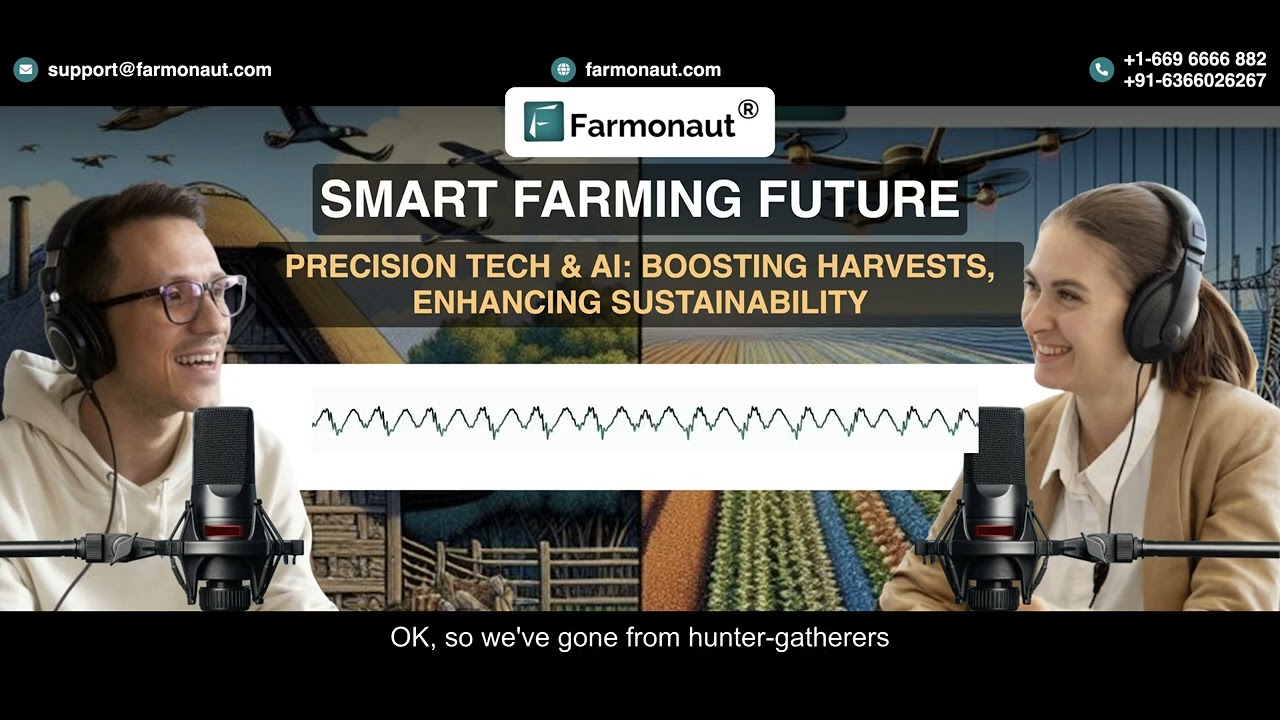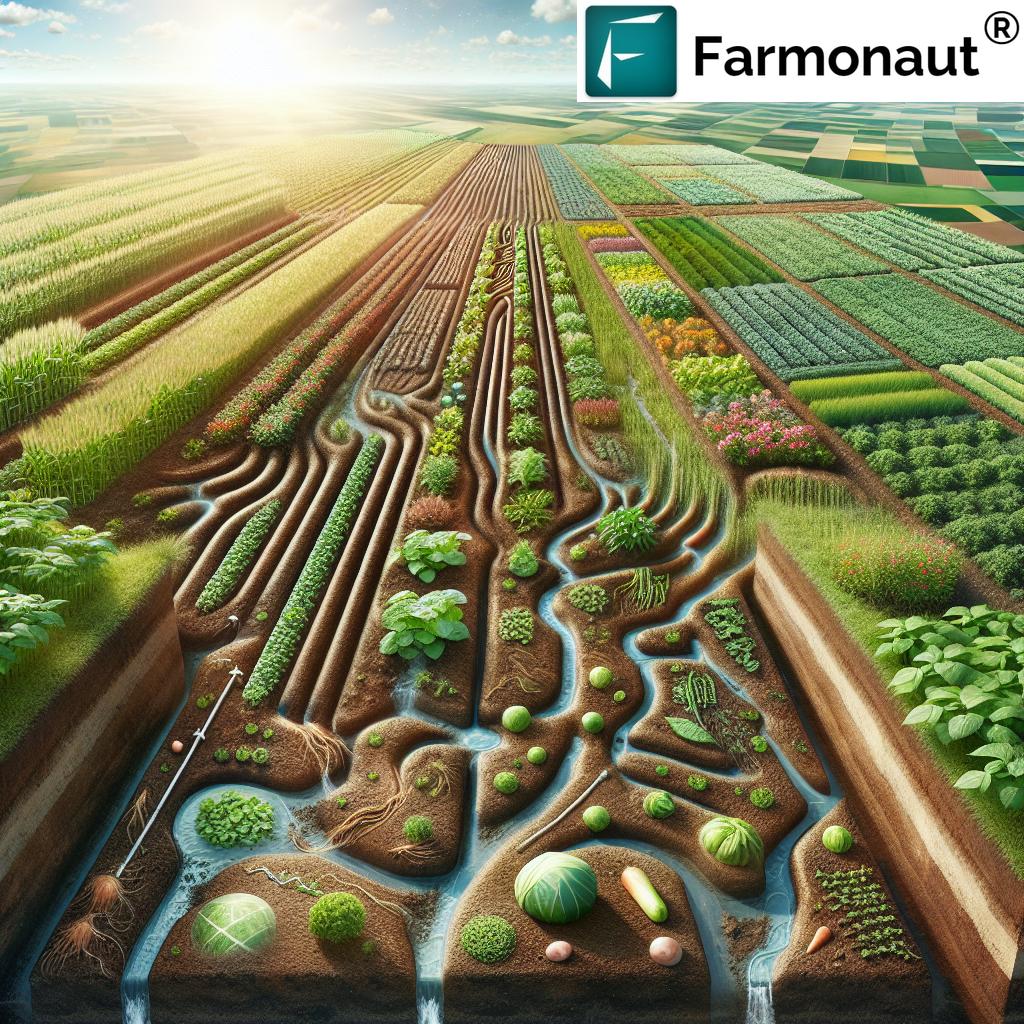Top 7 Tractor Implements for 2026: Boost Farm Efficiency
“In 2025, farms using smart tractor implements report up to 35% increase in operational efficiency.”
Introduction: Why Tractor Implements Matter in 2026
The evolving landscape of modern agriculture hinges on adaptability, efficiency, and sustainability. As 2026 approaches, tractor implements have emerged as indispensable tools allowing farmers to significantly boost farm productivity and reduce costs while meeting the rising global food demand. No longer just simple attachments or farm tools, today’s tractor farm implements blend technological advancements with smart systems to enable precision farming, helping to optimize resources, streamline operations, and promote sustainable practices.
The transformation brought about by intelligently designed tractor equipment is pivotal. Smart tractor implements are not only reducing manual labor but also improving operational time, crop yields, and environmental outcomes. This article delves into the trends, types, innovations, and accessibility of these tractor implements for sale, offering a roadmap for farmers and agricultural professionals aiming to future-proof their operations.
Understanding Tractor Implements and Their Importance
Tractor implements refer to various attachments and farm tools mounted or towed by tractors to perform specific agricultural operations. These range from plowing, planting, fertilizing, harvesting, irrigation management, and more. The versatility of farm tractor implements allows a single machine to accomplish multiple tasks, ultimately boosting farm efficiency, reducing costs, and improving productivity.
- Efficient use: Reduces manual labor and operating time
- Improved precision: Enables accurate seeding, fertilizing, spraying, and harvesting
- Resource optimization: Lowers input waste and costs
- Crop yield improvement: Ensures better germination and harvesting
- Sustainable practices: Minimizes environmental impact and supports soil health
The role of tractor implements in contemporary agriculture cannot be overstated: farmers are now able to meet growing global food demand sustainably, ensuring food security and profitability throughout the farm lifecycle.
Types of Tractor Implements in Modern Agriculture
By 2025 and 2026, the market offers a broad spectrum of tractor implements and farm implements tractor solutions. These tools serve diverse agricultural needs, each designed to extend the versatility of tractors. Understanding their types helps farmers select the right equipment to optimize farming operations.
- Ploughs & Harrows: Essential for soil preparation. They turn the soil, break clods, and create a fine seedbed.
- Seed Drills & Planters: Enable uniform seed spacing and depth for better germination.
- Sprayers & Spreaders: Efficient at applying fertilizers, herbicides, and pesticides, minimizing waste and environmental impact.
- Harvesters & Reapers: Streamline crop collection, reducing labor costs and post-harvest losses.
- Rotary Tillers & Cultivators: Improve weed control and soil aeration, which is crucial for healthy root development.
Each implement is designed to meet specific tasks, reducing manual workload and shortening operational time. The correct choice of tractor farm implements is key for modern farms to maximize productivity and maintain sustainable agricultural practices.
Innovations: Smart Technologies and Sustainable Farming
The year 2025 and beyond sees remarkable advancements in tractor farm implements. The integration of smart technologies and digital systems is transforming traditional farming and allowing farmers to optimize every operation, from planting to harvesting.
Key Technological Advancements in Tractor Implements
- GPS-Guided Implements: Ensure precision in field operations, reducing overlap and input waste during planting, fertilizing, and spraying tasks.
- Sensor and IoT-enabled Attachments: Allow real-time monitoring of soil health, crop status, and implement performance, enabling instant adjustments for maximum efficiency.
- Automation & AI-driven Controls: Reduce human error, ensure consistent results, and optimize the use of labor and resources.
- Eco-Friendly Designs: Innovations such as reduced soil compaction implements and energy-efficient hydraulics contribute to environmental sustainability.
- Blockchain Traceability: Ensures food safety and supply chain transparency, which Farmonaut’s traceability solution supports. Learn more about blockchain-based traceability and its benefits for your farm.
- Predictive Maintenance via IoT: Real-time data signals help reduce downtime and maintenance costs through predictive analytics.
These innovations redefine productivity and efficiency, supporting environmental impact monitoring as well. For example, Farmonaut’s carbon footprinting tool enables farmers to track emissions, augmenting the sustainability impact of their smart farm operations.
“Seven advanced tractor implements are projected to serve over 60% of large-scale farms by 2026.”
Top 7 Tractor Implements for 2026: Detailed Overview
Armed with the latest smart technologies, these top 7 tractor implements are leading the charge in modern farm efficiency for 2026 and beyond.
- Smart Ploughs & Variable-Depth Harrows
- Precision Seed Drills & IoT-Enabled Planters
- Automated Sprayers & Spreaders with Drone Integration
- Multi-Crop Harvesters & AI-Driven Reapers
- Rotary Tillers & Advanced Power Cultivators
- Smart Irrigation Implements & Connected Drip Systems
- Fleet-Integrated Trailers & Transport Implements
1. Smart Ploughs & Variable-Depth Harrows
These implements are designed for comprehensive soil preparation, offering automatic depth control, GPS guidance, and sensors for soil moisture and compaction mapping. Variable-depth harrowing ensures the right soil structure for the specific crop, yielding a fine seedbed while preserving soil health.
- Reduces manual adjustments during field operations
- Boosts labor efficiency and energy savings
2. Precision Seed Drills & IoT-Enabled Planters
Smart seed drills use variable-rate technology and IoT sensors for real-time seeding depth and spacing control. This results in uniform germination and maximized crop yields.
- Reduces input costs by minimizing seed wastage
- Allows for remote monitoring of planting operations
3. Automated Sprayers & Spreaders with Drone Integration
Equipped with precision nozzles, GPS mapping, and drone assistance, these implements ensure uniform application of fertilizers, herbicides, and pesticides. They dramatically reduce environmental impacts by targeting only required zones.
- Remote control and data analytics optimize application rate
- Supports carbon footprinting strategies
4. Multi-Crop Harvesters & AI-Driven Reapers
These advanced harvesters utilize AI for crop recognition, auto-adjusting their mechanisms for different crops. This maximizes efficiency, reduces crop losses, and ensures precise harvesting tailored to field conditions.
- Integrates data with smart farm management systems
- Reduces labor requirements for large-scale fields
5. Rotary Tillers & Advanced Power Cultivators
Rotary tillers now feature adjustable blades, depth sensors, and AI-based weed mapping. These implements provide fast weed control, soil aeration, and root zone enhancement without overworking the soil.
- Optimize fuel use and minimize soil compaction
- Useful for multiple crop cycles annually
6. Smart Irrigation Implements & Connected Drip Systems
Integrated with IoT sensors, these systems enable precision water management—automatically adjusting irrigation schedules based on soil moisture, weather data, and crop stage.
- Reduces water wastage and energy costs
- Supports large-scale farm management and resource optimization
7. Fleet-Integrated Trailers & Transport Implements
Modern trailers and transport implements now connect directly with farm fleet management software for real-time tracking, route optimization, and load management. They are crucial for efficient crop collection, storage, and delivery on contemporary farms.
- Reduces fuel costs and improves logistics
- Connects with fleet management platforms like Farmonaut for streamlined operations
Comparative Table: Smart Tractor Implements 2026
This table below compares the leading tractor implements for 2026, allowing farmers to assess technological features, productivity gains, estimated cost savings, and sustainability impact.
| Implement Name | Primary Function | Key Smart Feature/Technology | Estimated Productivity Boost (%) | Estimated Cost Savings (%) | Sustainability Impact |
|---|---|---|---|---|---|
| Smart Ploughs & Variable-Depth Harrows | Soil preparation, seedbed creation | GPS, depth sensors, moisture monitoring | 15–25% | 10–20% | High (minimized soil erosion, improved structure) |
| Precision Seed Drills & IoT Planters | Seeding, uniform planting | IoT, variable-rate seeding, remote diagnostics | 25–35% | 20–30% | Very High (optimal seed use, reduced run-off) |
| Automated Sprayers & Spreaders | Fertilizer/pesticide/herbicide application | GPS, drone integration, smart nozzles | 20–30% | 25–35% | Very High (reduced chemicals, minimized drift) |
| Multi-Crop Harvesters & AI Reapers | Crop harvesting, collection | AI crop detection, yield analytics | 30–40% | 20–30% | High (lower losses, improved soil preservation) |
| Rotary Tillers & Power Cultivators | Soil tillage, weed control | Adjustable blades, AI weed mapping | 15–25% | 10–15% | High (less fuel, improved root zones) |
| Smart Irrigation Implements | Precise water delivery | IoT sensors, weather-linked controls | 20–30% | 25–40% | Very High (conserves water, energy) |
| Fleet-Integrated Trailers | Transport & logistics | Telematics, route and load optimization | 10–20% | 15–25% | Medium (fuel savings, less idle time) |
Accessibility: Buying, Renting, and Managing Tractor Implements
In 2026, accessibility to tractor implements for sale has dramatically improved, thanks to digital transformation in agriculture. Farmers can now search for “tractor implements near me” on online platforms, compare options, and connect with local dealers or service providers with unprecedented transparency and speed.
Top Ways to Access Tractor Farm Implements in 2026
- Digital Marketplaces: Enable quick discovery of tractor implements for sale, price checking, and user reviews.
- Local Dealers: Continue to serve diverse regions by offering demonstrations and after-sales support.
- Rental and Leasing Models: Lower the ownership barrier for small and medium-scale farmers, ensuring high-tech implements are widely accessible.
- Government and Cooperative Schemes: Policies often subsidize farm tractor implements for underserved rural areas.
- Integrated Management Tools: Smart implements can be managed via fleet and resource management platforms. Learn about digitizing your farm machinery and equipment management with Farmonaut’s fleet tools.
Additionally, conditions for purchasing tractor farm implements are bolstered by API integrations that connect operational data with farm records. Explore the Farmonaut API and developer documentation for enhanced automation and data-driven decision-making.
Farmonaut’s Role: Enabling Smart, Data-Driven Farms
At Farmonaut, we understand the pivotal role of smart technology in modern agriculture. Through satellite-based monitoring, AI-driven advisory systems, blockchain traceability, fleet/resource management, and environmental impact tracking, we empower farmers, businesses, and governments to:
- Monitor soil health, crop growth, and implements’ performance in real-time
- Optimize inputs, reduce operational costs, and improve crop yields
- Trace resources from seed to harvest for supply chain transparency
- Adhere to sustainable, carbon-friendly practices
- Remotely supervise fleet operations for efficient machinery use
Our platform and mobile/web apps make smart farming accessible in local and global contexts, enabling farms of all sizes to thrive in the digital era.
Whether tracking crop health, managing large-scale plantation or forests, or seeking environmental compliance, our solutions adapt to every need. For those operating extensive holdings, the Farmonaut Large-Scale Farm Management suite ensures data-driven, precision agriculture that evolves with your operational goals.
Furthermore, our crop loan and insurance verification service seamlessly connects with farm records, reducing fraud, and simplifying access to financing for tractor implements and transformation projects.
FAQs About Tractor Implements & Smart Farm Tools
What are tractor implements and why are they important?
Tractor implements are attachments or tools that can be mounted or towed by tractors to perform specific agricultural tasks, such as plowing, planting, spraying, harvesting, and irrigation. They are vital for improving farm productivity, reducing manual labor, and enabling sustainable and efficient farm management.
Which implement types are crucial for modern agriculture in 2026?
The seven key implements are: smart ploughs & harrows, precision seed drills, automated sprayers & spreaders, multi-crop harvesters, rotary tillers & cultivators, smart irrigation systems, and fleet-integrated trailers. Each targets a specific stage of the farm cycle for maximum efficiency.
How do smart farm implements benefit small-scale farmers?
Technology-driven implements can be accessed through rental and cooperative models, reducing the need for large upfront investments. Smart tools optimize input use and crop yields, leading to higher profitability and sustainability, even on a smaller scale.
Does Farmonaut sell tractor implements?
No, we do not sell tractor implements. Instead, Farmonaut provides innovative satellite-based solutions and digital tools that help farmers and agri-businesses monitor, manage, and optimize their tractor implements, resources, and field operations.
How can real-time monitoring of implements improve farm operations?
Real-time monitoring via satellite or IoT systems helps prevent breakdowns with predictive maintenance, improves the efficiency of field operations, and ensures that implements are used optimally, saving time and reducing maintenance costs.
Are smart tractor implements environmentally friendly?
Yes. Many modern implements are designed for minimal soil compaction, reduced chemical input, efficient water use, and low emissions—contributing directly to sustainable agriculture and better environmental outcomes.
Conclusion: Shaping the Future of Farming in 2026 and Beyond
As 2026 draws closer, the pivotal role of tractor implements in modern agriculture continues to expand. Their integration with smart technologies, digital infrastructure, and sustainability-focused designs has transformed traditional practices, allowing farmers to optimize productivity, reduce costs, and meet the demands of a growing global population.
From soil preparation to harvesting and resource management, these advanced implements foster an agricultural ecosystem that is efficient, data-driven, and resilient. As accessibility to these tools improves—with support from digital platforms, rental models, and innovative tech like that offered by Farmonaut—more farmers worldwide can embrace smart farming to ensure food security and environmental stewardship into the future.
Whether you are searching for the latest tractor implements for sale, managing digital farm resources, or seeking to elevate your operations with smart technology, the future of farming lies in informed, technology-driven decision-making. Stay ahead by choosing the right tractor implements, optimizing them through data and satellite insights, and participating in the growing movement of sustainable agriculture.



















